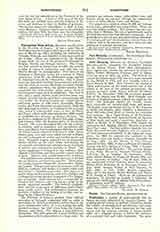

Portuguese West Africa, the name usually given to the Province of Angola. It has a coast line of 1015 miles from the Congo to the Cunene Rivers and an area of 490,525 sq. miles, including the territories of Cabinda, Molendo, and Massabi, on the coast north of the Congo. These are surrounded by the French Congo, while the rest of the province is bounded by Belgian, British, and German territory. The Congo was first entered by Diego Cam in 1484, who erected a pillar in token of occupation, and with him was Martin Behaim the cosmographer. Ever since, it has belonged to Portugal, except for a period of Dutch domination (1640-48), the Hollanders being expelled by Admiral Correa de Sà e Benevides. Only in recent years has this great territory been explored, and even now the whole of it is not effectively occupied, though military expeditions from the mother-country have conquered the most warlike tribes, and a chain of fortified posts keeps them in subjection. The coast is low, and a sandy, barren plain stretches some way inland; beyond this the province is mountainous and very fertile. St. Paul de Loanda, the capital, has an anchorage ground of 1700 acres; Benguella, Mossamedes, and Porto Alexandre are good ports; while the only drawback to Lobito, the terminus of the new railway, is that it lacks potable water, as does the Bahia dos Tigres, which could otherwise shelter 5000 vessels in its 63,000 acres of water, as deep as 117 feet. The province is irrigated by the Rivers Chiloango, Congo, and Cuanza, while the Zambesi skirts its southeast frontier. The coast abounds in fish, and the territory in minerals, such as malachite, iron, petroleum, salt, lead, and sulphur, but its principal wealth lies in coffee (of which Loanda exported 4112 tons in 1894), India rubber, gum, wax, and ivory, which are sent to Portugal and exchanged for cotton and woollen goods and wine. Formerly Angola depended for its prosperity almost entirely on the slave trade, and during the seventeenth and eighteenth centuries many thousands of natives were transported annually to Brazil. The native population is reckoned at four millions; their religion is Fetichism, and they include a great variety of races. There are only a small proportion of whites.
For administrative purposes the province is divided into six districts, and then into concelhos. Their names are Congo, Loanda, Benguella, Mossamedes, Huilla, and Lunda. The governor-general possesses civil and military attributes and resides at Loanda, while each district has a subordinate governor. For purposes of justice there are five comarcas, each with a judge; and a tribunal of second instance, composed of five judges, sits at Loanda. Each comarca has a commercial tribunal of first instance, and each parish a judge of the people, appointed annually. The military establishment consists of an army of 3200 men, partly European, partly native. For ecclesiastical purposes the province is subject to the Bishop of Loanda, and belongs to the Lisbon Province.
The Province of Guinea, another West African possession of Portugal, comprising 4450 sq. miles, is surrounded by French possessions, and its coast is cut up by innumerable inlets. It is a low-lying and well-watered territory, the chief rivers being the Cacheo, Mansoa, and Geba. The climate is unhealthful for Europeans. The soil is generally of great fertility, and the province is fit for plantations on a large scale. Its products are tobacco, sugar, India rubber, wax, and leather, which are exported through the commercial centers of Geba, Bissau, Farin, and Bolama.
The population numbers about 67,000 and belongs to ten races, subdivided into many tribes. There are very few whites resident. The country has one concelho, that of Bolama, the seat of government, and is divided otherwise into four military commands. It is generally in a state of war, the natives being turbulent. A vicar-general and six missionary rectors form the religious staff of the province, and these latter are also professors of primary instruction.
EDGAR PRESTAGE

